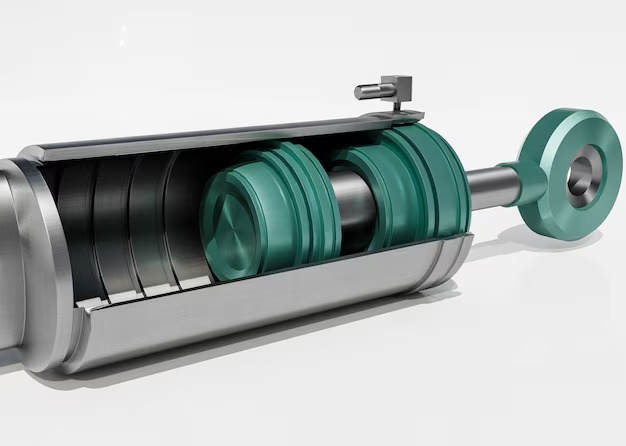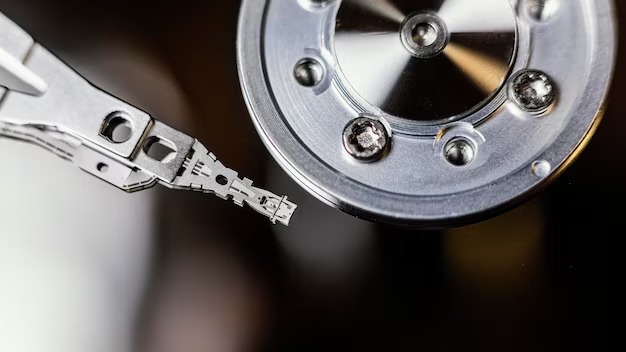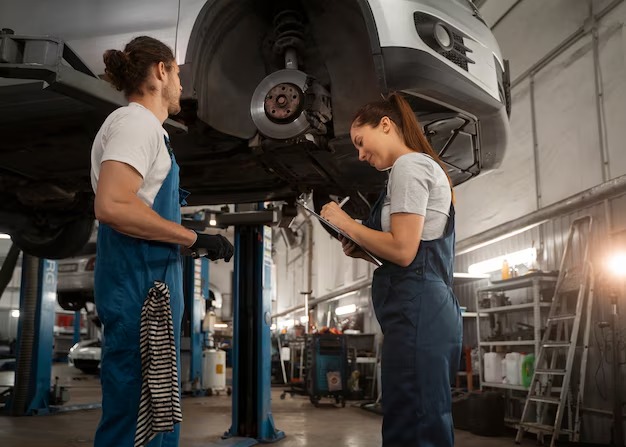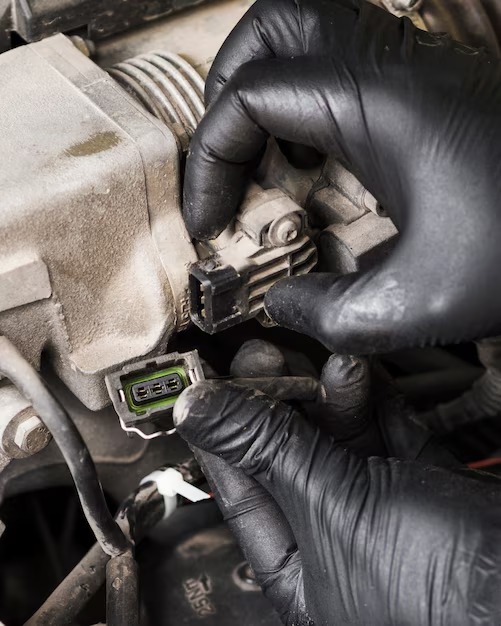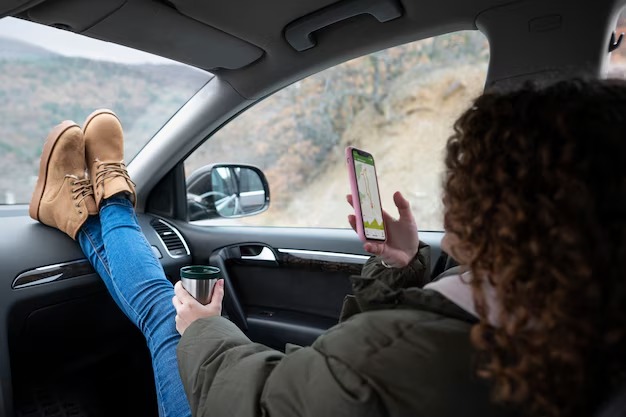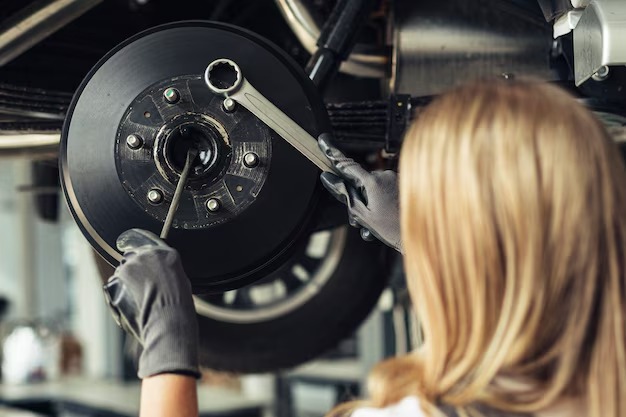Traveling with a Car Seat: Tips and Guidelines
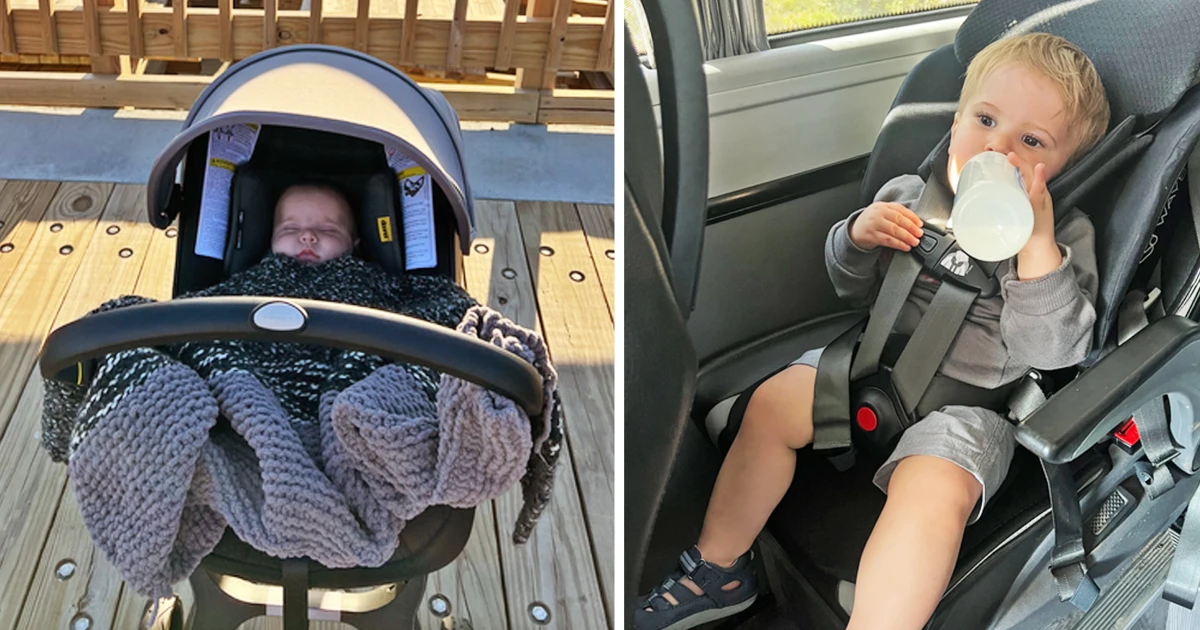
Traveling with a car seat can be a daunting task, especially if you are a new parent or have never done it before. However, with a little planning and preparation, it can be an easy and stress-free experience. Whether you are traveling by plane or car, there are several important factors to consider to ensure the safety and comfort of your child during the journey.
One of the first things to consider when traveling with a car seat is whether to bring your own or rent one at your destination. While renting a car seat might seem like a convenient option, it is not always the safest or most reliable choice. It is recommended to bring your own car seat, as you have control over its maintenance, installation, and history. Plus, your child is already familiar with the seat, which can provide them with a sense of security during the trip.
When traveling by plane, it is important to check with the airline regarding their policies and guidelines for bringing a car seat on board. Most airlines allow passengers to bring a car seat for free, either as a checked item or as a carry-on. However, it is recommended to call the airline in advance to confirm their specific requirements and regulations. Additionally, make sure your car seat is FAA-approved, as this ensures it meets the necessary safety standards for use on an aircraft.
Choosing the Right Car Seat
When it comes to traveling with a car seat, it’s important to choose the right one for your child’s age, weight, and height. Here are some tips to help you make the best decision:
Consider the Age and Weight
Car seats are categorized by age and weight ranges, so it’s crucial to choose a seat that aligns with your child’s age and weight. Infants typically require rear-facing seats, while older children can use forward-facing seats. Be sure to read the manufacturer’s guidelines and follow the recommendations.
Check for Safety Standards
Before purchasing a car seat, look for the safety standards it meets. Check for labels like FMVSS 213, which indicates compliance with federal regulations. Additionally, look for car seats that are tested for side-impact protection and have been certified by independent safety organizations.
Consider Installation and Ease of Use
Installing and using a car seat should be simple and straightforward. Look for seats that come with clear installation instructions and are compatible with your vehicle. Additionally, consider features like adjustable harnesses, easy-to-use buckles, and quick-release mechanisms for convenience.
Take Size and Fit into Account
Car seats come in various sizes, so it’s important to consider your vehicle’s dimensions and available space. Ensure that the car seat fits securely and leaves enough room for other passengers. Also, consider portable or lightweight options if you frequently travel or need to switch between vehicles.
By carefully considering your child’s age, weight, and height, as well as safety standards, installation and ease of use, and size and fit, you can choose the right car seat that provides optimal comfort and safety for your little one during your travels.
Checking Airline Guidelines
Before you travel with a car seat, it’s important to check the specific guidelines and policies of the airline you will be flying with. Each airline may have different rules and requirements for bringing a car seat on the plane.
Here are some steps you can take to ensure you are following the airline’s guidelines:
1. Research the Airline’s Policy
Visit the airline’s website or contact their customer service to find out their specific policy on traveling with a car seat. Look for information on whether the car seat can be used on the airplane, if it needs to be checked or gate checked, and any size or weight restrictions.
2. Check for FAA Approval
Ensure that your car seat is approved for use on an aircraft by the Federal Aviation Administration (FAA). Look for a label on the car seat that states it is certified for use on aircraft or check the FAA’s list of approved car seats.
3. Measure the Car Seat
Measure the dimensions of your car seat, including length, width, and height. Compare these measurements to the airline’s restrictions to ensure your car seat will fit in the assigned seating area.
4. Understand Gate Checking Procedures
If you plan to gate check your car seat, familiarize yourself with the airline’s procedures. Some airlines provide plastic bags or tags for gate-checking items, while others may require you to bring your own. Understand where you should drop off and pick up your car seat at the gate.
By checking the airline’s guidelines, you can ensure a smoother and hassle-free travel experience with your car seat. Remember to also check the policies of your destination airport, as they may have specific rules for handling car seats upon arrival.
Proper Installation in the Car
Proper installation of a car seat is crucial for the safety of your child while traveling. Follow these tips to ensure a secure and correct installation:
1. Read the car seat manual: Before installing the car seat, carefully read the manual provided by the manufacturer. This will provide you with detailed instructions specific to your seat model.
2. Select the appropriate seating position: Choose a seating position in the car that allows for proper installation and offers maximum safety. It is generally recommended to install the car seat in the back seat.
3. Use the right installation method: There are different installation methods, such as using the seat belt or using the LATCH (Lower Anchors and Tethers for Children) system. Make sure you choose the method that is compatible with your car seat and vehicle.
4. Install the car seat tightly: The car seat should be installed as tightly as possible to minimize movement. Use your body weight to push down on the seat while tightening the belt or LATCH straps.
5. Check for proper recline angle: The car seat should have a specific recline angle to ensure your child’s safety and comfort. Use the built-in recline adjuster or recline angle indicator to achieve the correct angle.
6. Check for tightness: After installation, give the car seat a firm tug at the belt or straps. It should not move more than one inch in any direction.
7. Use additional support if needed: Depending on the age and size of your child, additional support may be required. This can include using a rolled towel or pool noodle to achieve the proper fit and support.
Remember, proper installation of a car seat is a crucial step in ensuring your child’s safety while traveling. If you are unsure about the installation process, consult a certified technician or seek professional help.
Using a Car Seat Travel Bag
When traveling with a car seat, it’s important to keep it protected and easily transportable. That’s where a car seat travel bag comes in handy. A car seat travel bag is a specially designed bag that fits most car seat models and helps to keep the seat safe and clean during travel.
Here are a few tips on using a car seat travel bag:
1. Choose a durable bag: Look for a bag made of strong, waterproof material to ensure the car seat is protected from any spills or accidents during travel. A bag with reinforced stitching and high-quality zippers will provide added durability.
2. Properly pack the car seat: Before placing the car seat in the travel bag, remove any loose items or accessories. Secure the straps and harnesses so they don’t get tangled. Place the car seat in the bag and zip it up, making sure all parts are properly covered and protected.
3. Use additional padding: Consider using extra padding, such as blankets or towels, to provide additional protection to the car seat. This can help safeguard against any bumps or impact during transit.
4. Make it easy to carry: Look for a bag with comfortable handles or shoulder straps for easy carrying. Some bags even have wheels, making it convenient to roll the car seat through airports or other travel locations.
5. Label the bag: Attach a luggage tag or label to the bag with your contact information. This can be helpful in case the bag gets misplaced or lost during travel.
Remember, using a car seat travel bag is not only practical but also ensures the safety and longevity of your car seat. By properly packing and protecting your car seat, you can have peace of mind while traveling with your little one.
Securing the Car Seat on the Plane
When traveling with a car seat on a plane, it is important to secure it properly to ensure the safety of your child. Here are some tips for securing the car seat on the plane:
- Check with the airline: Before you travel, make sure to check with the airline to understand their specific policies and regulations regarding car seat usage on board. Some airlines may require a certain type of car seat or have specific guidelines for installation.
- Use a car seat approved for air travel: Not all car seats are approved for use on planes, so make sure to choose one that is specifically designed and certified for air travel. Look for the label or sticker on the car seat indicating that it is approved for airplane use.
- Secure the car seat with the seat belt: Most airplanes do not have LATCH systems for installing car seats, so you will need to use the airplane seat belt to secure the car seat. Place the car seat in the airplane seat and follow the manufacturer’s instructions for securing it with the seat belt.
- Use a seat belt extender if needed: Depending on the size of the airplane seat, you may need a seat belt extender to properly secure the car seat. Some airlines provide seat belt extenders, but it is recommended to bring your own to ensure compatibility.
- Tighten the seat belt properly: Once the car seat is secured with the seat belt, make sure to tighten the belt as much as possible. This will help ensure that the car seat is stable and doesn’t move during the flight.
- Follow the airline’s instructions: In addition to following the manufacturer’s instructions for securing the car seat, it is important to also listen to and follow any specific instructions provided by the airline. Flight attendants may have additional guidelines or requirements for securing the car seat.
- Consider using a travel harness: If your child is older and has outgrown the car seat, you may consider using a travel harness that is designed for use on airplanes. These harnesses attach to the airplane seat and provide an additional level of safety and restraint for your child.
By properly securing the car seat on the plane, you can ensure your child’s safety and have a more comfortable and stress-free flight. Remember to always follow the manufacturer’s instructions and any guidelines provided by the airline.
Ensuring Comfort for Your Child
When traveling with a car seat, it is essential to prioritize your child’s comfort. Here are some tips to ensure your child is comfortable during the journey:
- Choose a car seat with proper padding and cushioning to provide a comfortable seating experience for your child.
- Adjust the straps and harnesses of the car seat to fit your child securely and comfortably. Make sure they are not too tight or too loose.
- Consider using soft, breathable seat covers to provide additional comfort for your child.
- Bring along their favorite toys, books, or comfort items to keep them entertained and at ease during the ride.
- Ensure that the car seat is installed correctly and securely to minimize any movement or discomfort for your child.
- Provide regular breaks during long journeys to allow your child to stretch their legs and take a break from sitting in the car seat.
- Adjust the temperature and ventilation in the car to ensure your child stays comfortable and doesn’t overheat or get too cold.
- Pack extra pillows or blankets to provide additional support and comfort during the journey.
- Consider using a travel pillow or neck cushion to help your child sleep and maintain a comfortable position.
- Monitor your child regularly during the journey to check if they need any adjustments or breaks for comfort.
By following these tips, you can ensure that your child stays comfortable and content while traveling with a car seat.
Car Seat Safety Checks
Before embarking on your journey with a car seat, it is essential to perform some safety checks to ensure that the seat is secure and will provide optimal protection for your child. Here are some important things to consider:
1. Installation
First and foremost, make sure that your car seat is properly installed. Follow the manufacturer’s instructions and refer to your vehicle’s owner’s manual for guidance. Check for a tight and secure fit, ensuring minimal movement in any direction.
2. Secure Straps
Ensure that all straps and harnesses are properly adjusted and securely fastened. Check for proper placement and tightness to ensure that they can effectively restrain your child in the event of a collision.
3. Harness Height
Check that the harness is positioned at the appropriate height for your child. The shoulder straps should be level with or slightly below the shoulders for rear-facing seats and level with or slightly above the shoulders for forward-facing seats.
4. Buckle Position
Verify that the buckle is in the correct position. For rear-facing seats, the buckle should be at or below your child’s shoulder level, while for forward-facing seats, it should be at or above their shoulder level.
5. Chest Clip Placement
Ensure that the chest clip is positioned at armpit level, resting over the sternum. It should not be too high or too low, as the correct placement helps distribute crash forces across the body.
6. LATCH System (Lower Anchors and Tethers for Children)
If your car seat is installed using the LATCH system, check that the lower anchor straps are properly connected to the designated anchor points in your vehicle. Ensure that the tether strap is securely attached to the appropriate anchor point in your car.
7. Expiration Date
Always check the expiration date of your car seat. Most seats have an expiration date stamped on them, typically six to ten years from the date of manufacture. Using an expired car seat can compromise its safety and effectiveness in protecting your child.
8. Crash History
If you are using a second-hand car seat, it is crucial to know its crash history. Avoid using seats that have been involved in previous accidents, as they may have unseen damage that compromises their ability to protect your child.
By performing these safety checks before each use, you can ensure that your child’s car seat provides the necessary protection during your travels.
| Check | Explanation |
|---|---|
| Installation | Check that the car seat is properly installed and securely fastened. |
| Secure Straps | Ensure that all straps and harnesses are properly adjusted and fastened. |
| Harness Height | Check that the harness is at the correct height for your child. |
| Buckle Position | Verify that the buckle is in the correct position for your child’s seating direction. |
| Chest Clip Placement | Ensure that the chest clip is positioned correctly over your child’s sternum. |
| LATCH System | If using the LATCH system, ensure the lower anchors and tether are properly connected. |
| Expiration Date | Check the expiration date to ensure the car seat is still safe for use. |
| Crash History | Avoid using car seats that have been involved in previous accidents. |
Keeping Your Car Seat Clean
Keeping your car seat clean is important not only for the comfort of your child, but also for their safety. Here are some tips to help you keep your car seat clean and well-maintained:
1. Regularly wipe down the surfaces: Use a mild soap and warm water solution to wipe down the surfaces of the car seat regularly. This will help remove any dirt, stains, or spills that may accumulate over time.
2. Use a car seat cover: Consider using a car seat cover to protect the seat from messes. A cover can easily be removed and machine washed, making it an excellent option for keeping your car seat clean.
3. Avoid eating and drinking in the car seat: To prevent spills and stains, it’s best to avoid allowing your child to eat or drink in their car seat. If necessary, provide a snack or drink only when the car is parked and stationary.
4. Clean up spills immediately: Accidents happen, but it’s important to clean up spills as soon as they occur. Use a damp cloth or wipe to blot the spill and prevent it from seeping into the car seat padding.
5. Vacuum regularly: Use a handheld vacuum or attachment to remove any crumbs or debris that may accumulate in the car seat. This will help to keep the seat clean and free from allergens.
6. Follow the manufacturer’s instructions: Every car seat is different, so be sure to read and follow the manufacturer’s instructions for cleaning and maintenance. This will ensure that you are using the proper cleaning methods and products for your specific car seat model.
By following these tips, you can keep your car seat clean and in good condition, providing a safe and comfortable ride for your child.
Question-Answer:, How to travel with a car seat
How do I choose the right car seat for traveling?
When choosing a car seat for traveling, it is important to consider the child’s age, weight, and height. Look for a car seat that is appropriate for your child’s size and ensure that it is approved for use on airplanes if you plan to fly. It is also helpful to choose a car seat that is lightweight and easy to install and uninstall.
Can I use a car seat on an airplane?
Yes, you can use a car seat on an airplane. Most airlines allow the use of car seats, and some even require them for young children. However, it is important to check with the specific airline you will be flying with to ensure that they allow car seats and to understand any specific guidelines or requirements.
How do I install a car seat in a rental car?
The process of installing a car seat in a rental car will vary depending on the type of car seat you have and the specific rental car you are using. It is important to read the car seat manual and the rental car instructions for proper installation. In general, you will need to use the vehicle’s seat belt or the LATCH system to secure the car seat in place.
What are the benefits of traveling with a car seat?
Traveling with a car seat can provide several benefits. Firstly, it ensures the safety and security of your child while traveling, both in the car and on airplanes. It also provides a familiar and comfortable seating option for your child, which can make traveling more enjoyable. Additionally, having a car seat allows you to have more control over your child’s safety, rather than relying on potentially unsafe or inadequate rental car seats.
How do I clean a car seat while traveling?
Cleaning a car seat while traveling can be challenging, but it is possible. Start by removing any removable fabric or padding and washing them according to the manufacturer’s instructions. For more extensive cleaning, you can use a mild soap and water solution to wipe down the car seat, being careful to not saturate it. It is also helpful to have a portable vacuum or lint roller to remove any crumbs or debris.
What is the safest way to travel with a car seat?
The safest way to travel with a car seat is to use it on the airplane. Make sure to check the car seat in as bulky luggage or gate-check it, and use it on the airplane during the flight. This will protect your child in case of turbulence or other unexpected events.
Can I use a car seat on an airplane?
Yes, you can use a car seat on an airplane. In fact, it is highly recommended to use a car seat on airplane flights, especially for young children. Not only does it provide an added level of safety, but it also helps to keep your child comfortable and secure during the flight.


